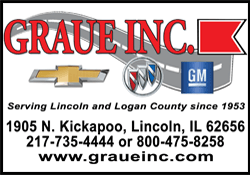Man behind New Year's attack visited New Orleans before, recorded video
with smart glasses, FBI says
 Send a link to a friend
Send a link to a friend
 [January 06, 2025]
By JACK BROOK, STEPHEN SMITH and SARA CLINE [January 06, 2025]
By JACK BROOK, STEPHEN SMITH and SARA CLINE
NEW ORLEANS (AP) — The man responsible for the truck attack in New
Orleans on New Year's Day that killed 14 people visited the city twice
before and recorded video of the French Quarter with Meta smart glasses,
an FBI official said Sunday.
Shamsud-Din Jabbar also traveled to Cairo and Canada before the attack
although it was not yet clear whether those trips were connected to the
attack, Deputy Assistant Director Christopher Raia said at a news
conference. Federal officials believe Jabbar, a U.S. citizen and former
U.S. Army soldier, was inspired by the Islamic State militant group to
carry out the attack.
Police fatally shot Jabbar, 42, during an exchange of gunfire at the
scene of the deadly crash of the rented pickup truck on Bourbon Street,
famous worldwide for its festive vibes in New Orleans’ historic French
Quarter.
Federal investigators so far believe Jabbar acted alone, but are
continuing to explore his contacts.
“All investigative details and evidence that we have now still support
that Jabbar acted alone here in New Orleans,” said Raia. “We have not
seen any indications of an accomplice in the United States, but we are
still looking into potential associates in the U.S. and outside of our
borders."
Lyonel Myrthil, FBI special agent in charge of the New Orleans Field
Office, said Jabbar traveled to Cairo in the summer of 2023 and then to
the Canadian province of Ontario a few days later.
“Our agents are getting answers to where he went, who he met with and
how those trips may or may not tie into his actions here,” Myrthil said.

Suspect recorded video with smart glasses while plotting attack, the
FBI says
Jabbar had also traveled to New Orleans twice in the months preceding
the attack, first in October and again in November. On Oct. 31, Myrthil
said Jabbar used glasses from Meta, the parent company of Facebook, to
record video as he rode through the French Quarter on a bicycle as "he
plotted this hideous attack." He said Jabbar was also in New Orleans on
Nov. 10.
He also wore the glasses capable of livestreaming during the attack, but
Myrthil said Jabbar did not activate them.
When asked about the glasses, a Meta spokesperson declined comment to
The Associated Press.
The FBI released Jabbar's recorded video from the planning trip to New
Orleans as well as video showing him placing two containers with
explosive devices in the French Quarter at around 2 a.m. shortly before
the attack. One of the containers, a cooler, was moved a block away by
someone uninvolved with the attack, officials said.
Joshua Jackson, New Orleans special agent in charge, said Jabbar
privately purchased a semiautomatic rifle on Nov. 19 from an individual
in a legal transaction in Arlington, Texas.
“This was a chance encounter,” Jackson said. “There’s no way this
individual knew that Jabbar was radicalized or had any sort of awareness
that this attack was imminent.”
Security a prime concern ahead of other major events
Police have used vehicles and barricades to block traffic at Bourbon and
Canal streets since. Other law enforcement agencies helped city officers
provide extra security, said Reese Harper, a New Orleans police
spokesperson.
The first parade of the Carnival season leading up to Mardi Gras in
March is scheduled Monday evening. New Orleans also will host the Super
Bowl on Feb. 9.
In a previous effort to protect the French Quarter, the city installed
steel columns known as bollards to restrict vehicle access to Bourbon
Street. The posts normally retract to allow deliveries to bars and
restaurants. But they stopped working reliably after being gummed up by
Mardi Gras beads, beer and other detritus.
[to top of second column]
|

Lyonel Myrthil, special agent in charge of the New Orleans field
office, second from left, shows footage of Shamsud-Din Jabbar, the
man who carried out an attack on New Orleans' Bourbon Street on New
Year's Day, during a news conference in a secure garage at the FBI
Headquarters in New Orleans, Sunday, Jan. 5, 2025. (Scott Threlkeld/The
Times-Picayune/The New Orleans Advocate via AP)

When New Year’s Eve arrived, the bollards were gone. New Orleans
Mayor LaToya Cantrell acknowledged the city remains uncertain as to
whether the new bollards it is installing in the French Quarter
would be able to stop a similar vehicle attack.
“The thorough assessment that I am asking for will determine whether
they are strong enough,” Cantrell said. “I can’t say with surety
that’s the case but an expert will be able to do so, and we’ll
respond accordingly.” Cantrell said she requested that Homeland
Security upgrade Mardi Gras to the highest Special Event Assessment
Rating to receive more federal support for security and risk
assessments.
President Joe Biden planned to travel to New Orleans with first lady
Jill Biden on Monday to “grieve with the families and community
members impacted by the tragic attack.”
After signing the Social Security Fairness Act, Biden was asked
Sunday by journalists what his message would be to the families he
will meet. He responded, “I’ve been there. There’s nothing you can
really say to somebody that’s just had such a tragic loss, my
message is going to be personal if I get to get them alone.”
The two explosive devices that Jabbar placed were recovered by
federal officials undetonated. ATF Special Agent in Charge Joshua
Jackson credited New Orleans police for responding quickly before
the devices could be set off. He said both were equipped with
receivers and a transmitter was recovered in Jabbar’s truck.
Jabbar exited the crashed truck wearing a ballistic vest and helmet
and fired at police, wounding at least two officers before he was
fatally shot.
Bomb-making materials were found at Jabbar's home. Jackson said
Jabbar appeared to have used a chemical compound known as RDX, which
he said is commonly available in the U.S. He said field tests found
RDX at Jabbar’s Houston home and they are conducting further tests
on similar materials found at the New Orleans rental home.
Jabbar tried to burn down the rental house by setting a small fire
in a hallway but the flames went out before firefighters arrived.
Suspect proclaims support for Islamic State group
Jabbar proclaimed support for the Islamic State militant group in
online videos posted hours before he struck. It was the deadliest
IS-inspired assault on U.S. soil in years, laying bare what federal
officials have warned is a resurgent international terrorism threat.

Homeland Security Secretary Alejandro Mayorkas told ABC’s “This Week
with George Stephanopoulos” that the country faces “not only the
persistent threat of foreign terrorism" but "a significant increase
in what we term homegrown violent extremism” in recent years.
The attack has prompted security concerns elsewhere in the nation.
In California, for instance, military officials announced via online
platform X that access has been tightened to Camp Pendleton, the
largest Marine base on the West Coast with tens of thousands of
active-duty service members. The announcement said all IDs are being
checked for base entry, a “trusted travel program” is being
suspended and random inspections will be carried out.
All contents © copyright 2024 Associated Press. All rights reserved |